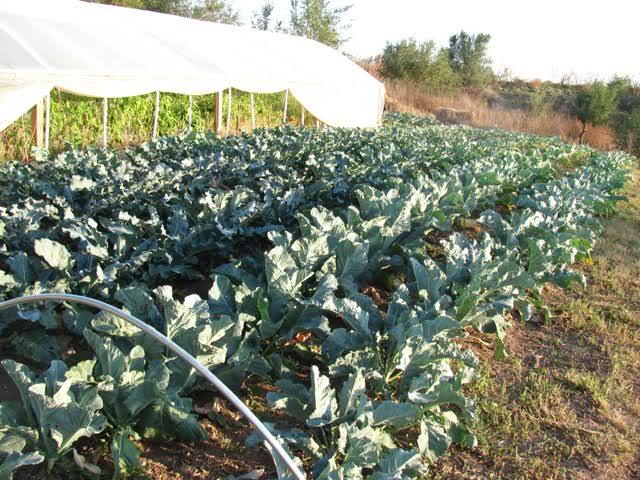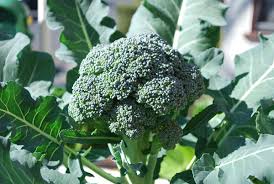Broccoli is a green vegetable that many people enjoy eating. It has a lot of tiny green parts, and the whole thing is called a “head.” Broccoli comes from a plant, and people often cook it before eating. When you cook broccoli, it becomes soft and tasty.
People like broccoli for different reasons. One reason is that it’s good for your body. Broccoli has vitamins and minerals that help keep you healthy. Some people say it’s a superfood because it has things that make your body strong.
Not only is broccoli healthy, but it also looks interesting. The tiny green parts make it unique and fun to look at. Some people think it looks like a little tree because of the way it’s shaped.
Cooking broccoli is easy. You can boil it or steam it. Some people like to eat it with a dip, like ranch dressing. Others add it to pasta or stir-fry. There are many ways to enjoy broccoli, and you can try different ways to find what you like best.
One cool thing about broccoli is that it can be part of your meal in different ways. You can have it as a side dish or mix it into the main course. Some people even put it in soups. This makes it versatile and lets you enjoy it with various foods.
If you haven’t tried broccoli before, it’s worth a taste. You might discover that you like its unique flavor. It’s a simple and nutritious vegetable that can add a bit of green goodness to your meals. So, next time you see broccoli at the store, give it a try and see if it becomes one of your favorite veggies!
Farming and Care Guide of Broccoli

Broccoli Farming and Care Guide:
1. Starting Off: Begin by choosing a suitable location for your broccoli. Broccoli prefers well-drained soil rich in organic matter. Ensure the soil pH is between 6.0 and 7.0 for optimal growth.
2. Planting: Plant broccoli seeds or seedlings in early spring or late summer, depending on your climate. Space the plants about 18 to 24 inches apart to provide them with enough room to grow. Planting in rows with sufficient spacing helps air circulation.
3. Sunlight and Watering: Broccoli thrives in full sun, so choose a location with at least 6 hours of sunlight per day. Keep the soil consistently moist but not waterlogged. Water at the base of the plant to prevent fungal issues.
4. Fertilization: Use a balanced fertilizer before planting and side-dress with nitrogen when the plants are about 3 weeks old. Be cautious not to over-fertilize, as this can lead to excessive leaf growth and delay the formation of broccoli heads.
5. Mulching: Apply mulch around the plants to retain moisture, suppress weeds, and regulate soil temperature. Mulching also helps prevent soil compaction.
6. Weed Control: Regularly remove weeds to reduce competition for nutrients. Be gentle around the plants to avoid damaging their shallow roots.
7. Pest Management: Watch for common broccoli pests like aphids, cabbage worms, and flea beetles. Consider using natural predators or organic pesticides to control pest populations. Inspect your plants regularly for signs of infestation.
8. Disease Prevention: Broccoli is susceptible to diseases like clubroot and downy mildew. Practice crop rotation, choose disease-resistant varieties, and provide adequate spacing to minimize the risk of diseases.
9. Harvesting: Harvest broccoli when the central head is firm and tight. Cut the main head leaving several inches of stem attached to encourage the development of side shoots, allowing for additional smaller harvests.
10. Storage: Store harvested broccoli in the refrigerator. It stays fresh for about a week. If you have excess broccoli, consider blanching and freezing it for longer storage.
11. Succession Planting: To extend your harvest, consider planting broccoli in succession. Start new plants every few weeks, ensuring a continuous supply of fresh broccoli throughout the growing season.
12. Winter Care: If you live in a colder climate, protect your broccoli from frost with row covers or blankets. Broccoli can tolerate some cold, but severe frost may damage the heads.
By following these guidelines, you can cultivate healthy and productive broccoli plants. Adjust your care routine based on your specific climate and local conditions for the best results.
Read Also: 15 Amazing Dog Facts you Don’t Know About
Uses of Broccoli

Here are the Versatile Uses of Broccoli:
1. Culinary Delight: Broccoli is a versatile vegetable that can be enjoyed in various culinary dishes. Steam or boil broccoli and serve it as a side dish with a drizzle of olive oil and a sprinkle of salt. Add broccoli florets to salads for a crunchy and nutritious boost.
2. Stir-Fries and Sauteed Goodness: Incorporate broccoli into stir-fries for a vibrant mix of colors and textures. Saute broccoli with garlic and other vegetables for a quick and tasty side dish.
3. Nutrient-Rich Soups: Enhance the nutritional content of soups by adding broccoli. Creamy broccoli soup is a classic favorite. Combine broccoli with other vegetables to create hearty and wholesome soups.
4. Broccoli Casseroles: Prepare delicious casseroles by combining broccoli with cheese, breadcrumbs, and other ingredients.
Broccoli and cheese make a delightful pairing in many casserole recipes.
5. Healthy Snacking: Enjoy broccoli as a healthy and crunchy snack by pairing it with your favorite dip. Roast broccoli with a touch of seasoning for a satisfying and nutritious snack.
6. Vegetarian and Vegan Dishes: Feature broccoli in vegetarian and vegan dishes for added texture and flavor. Create broccoli-based pasta dishes or incorporate it into vegetable lasagna.
7. Broccoli Rice and Pasta: Process broccoli into “rice” or blend it into sauces to add nutritional value to rice dishes and pasta.
Broccoli-infused pasta sauces provide a unique twist to traditional recipes.
8. Pickled and Fermented Treats: Experiment with pickling or fermenting broccoli for tangy and probiotic-rich snacks. Pickled broccoli florets can be a tasty addition to salads or served as a flavorful side.
9. Health Drinks and Smoothies: Incorporate broccoli into health drinks and smoothies for a nutrient-packed boost. Blend broccoli with fruits and yogurt for a refreshing and nutritious beverage.
10. Freezing for Future Use: Freeze blanched broccoli for future use in recipes, ensuring a convenient and quick addition to meals.
Frozen broccoli retains its nutritional value and can be easily incorporated into various dishes.
Broccoli’s adaptability and nutritional benefits make it a valuable ingredient in the kitchen. From simple side dishes to creative culinary experiments, there are countless ways to savor the goodness of broccoli in your meals.
Read Also: All About Dogs and Puppies
Economic Benefits of Broccoli
Economic Benefits of Broccoli Cultivation:
1. Market Demand: Broccoli has a consistent and strong market demand due to its popularity among consumers who prioritize healthy eating. Its widespread use in various culinary dishes contributes to sustained market interest.
2. High Market Value: Broccoli often commands a relatively higher market price compared to some other vegetables, leading to potentially increased profits for farmers.
3. Year-Round Cultivation: Broccoli can be cultivated throughout the year, providing farmers with the opportunity for continuous production and income.
4. Job Creation: Broccoli cultivation and its associated activities, such as harvesting, processing, and transportation, generate employment opportunities within the agricultural sector.
5. Crop Rotation Benefits: Including broccoli in crop rotation plans helps improve soil health and reduces the risk of pests and diseases, contributing to sustainable farming practices.
6. Export Opportunities: Broccoli’s popularity internationally opens avenues for export, enabling farmers to tap into global markets and diversify their income sources.
7. Value-Added Products: Farmers can explore the production of value-added broccoli products, such as frozen broccoli, broccoli powder, or packaged broccoli snacks, which can enhance economic returns.
8. Support for Local Economy: Broccoli cultivation fosters local economic development by supporting local markets, businesses, and supply chains.
9. Government Incentives: In some regions, governments may provide incentives or subsidies to promote the cultivation of nutritious crops like broccoli, further supporting farmers economically.
10. Diversification and Risk Management: Including broccoli in a diversified crop portfolio helps farmers manage risks associated with market fluctuations and weather conditions, contributing to a more stable income.
11. Research and Innovation: Economic benefits extend to research and innovation in broccoli cultivation, with ongoing efforts to develop improved varieties, pest-resistant strains, and sustainable farming practices.
12. Healthcare Cost Reduction: The promotion of broccoli consumption contributes to public health by potentially reducing healthcare costs associated with diet-related illnesses. A healthier population can lead to a more economically productive society.
Broccoli cultivation not only provides direct economic benefits to farmers but also contributes to broader economic development through employment, market opportunities, and sustainable agricultural practices.
Read Also: Low-carb Desserts

